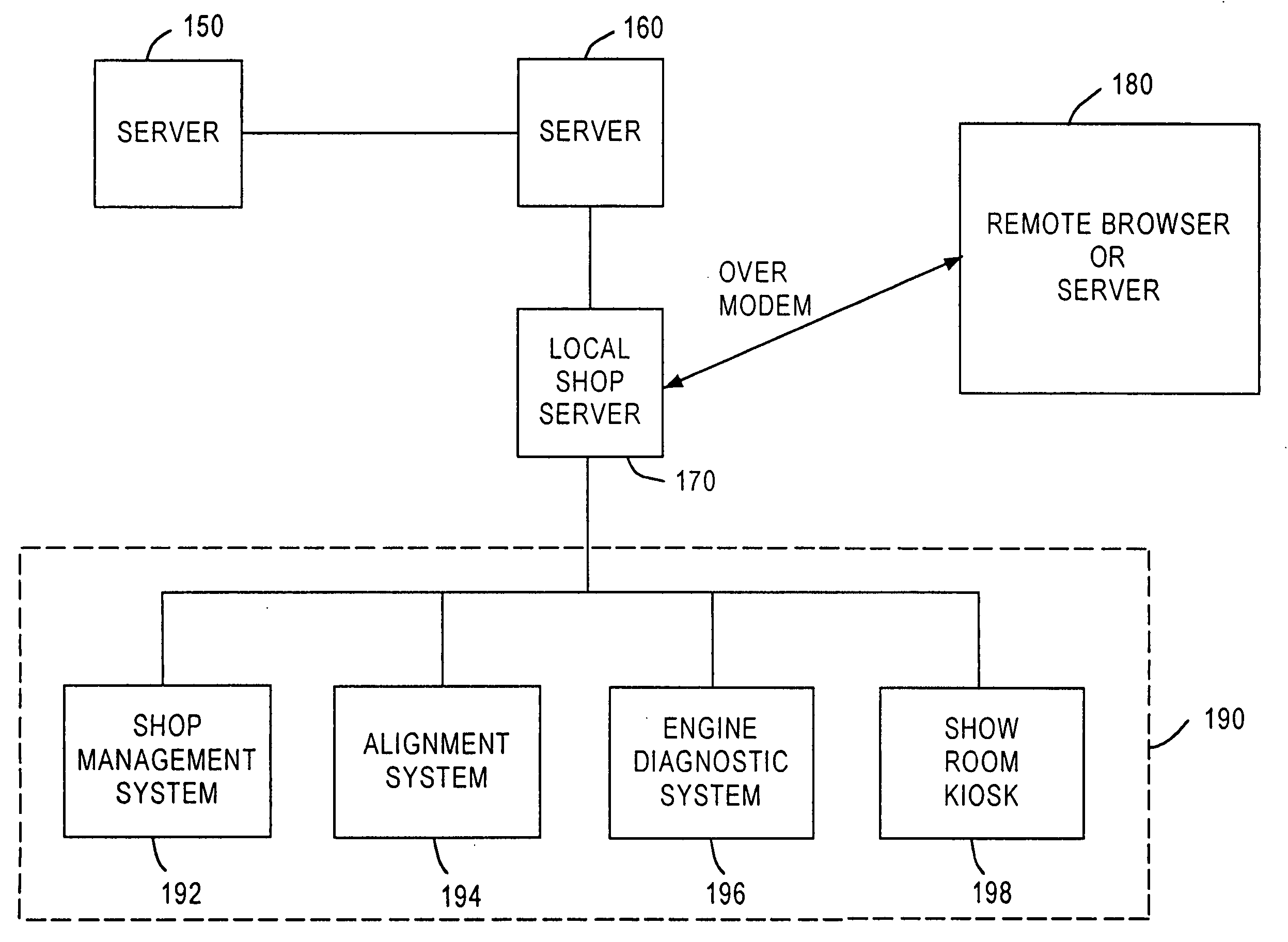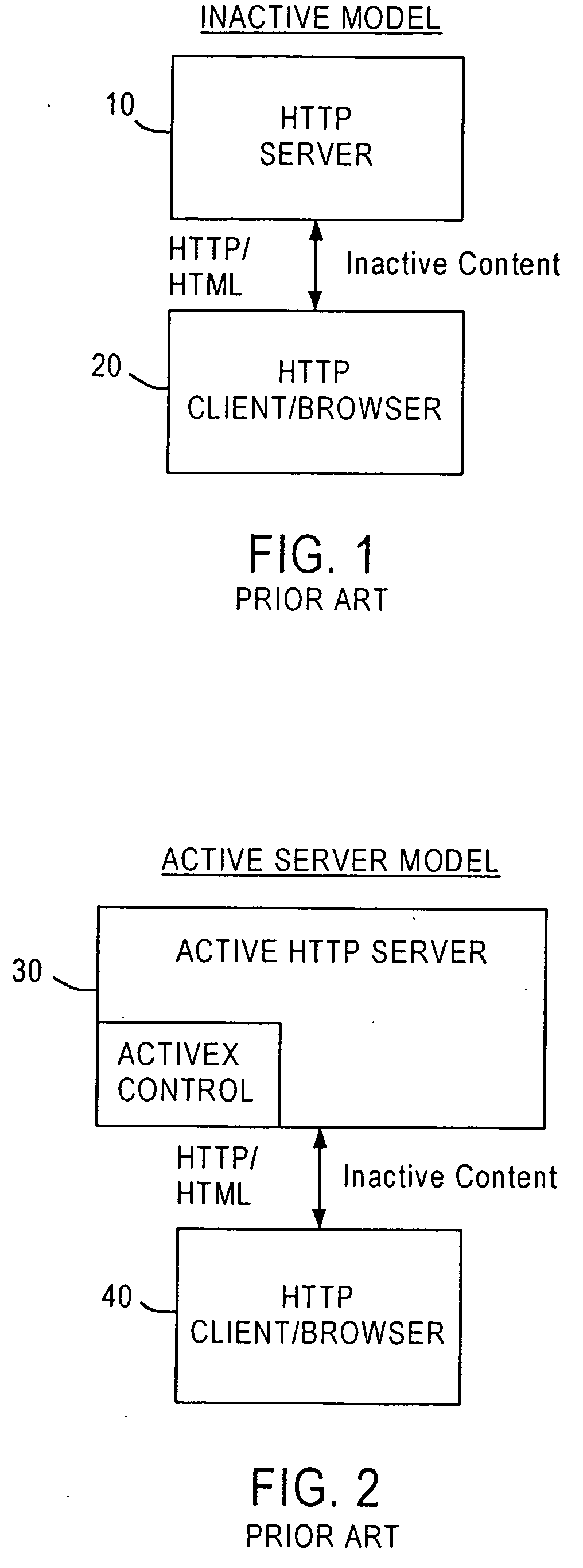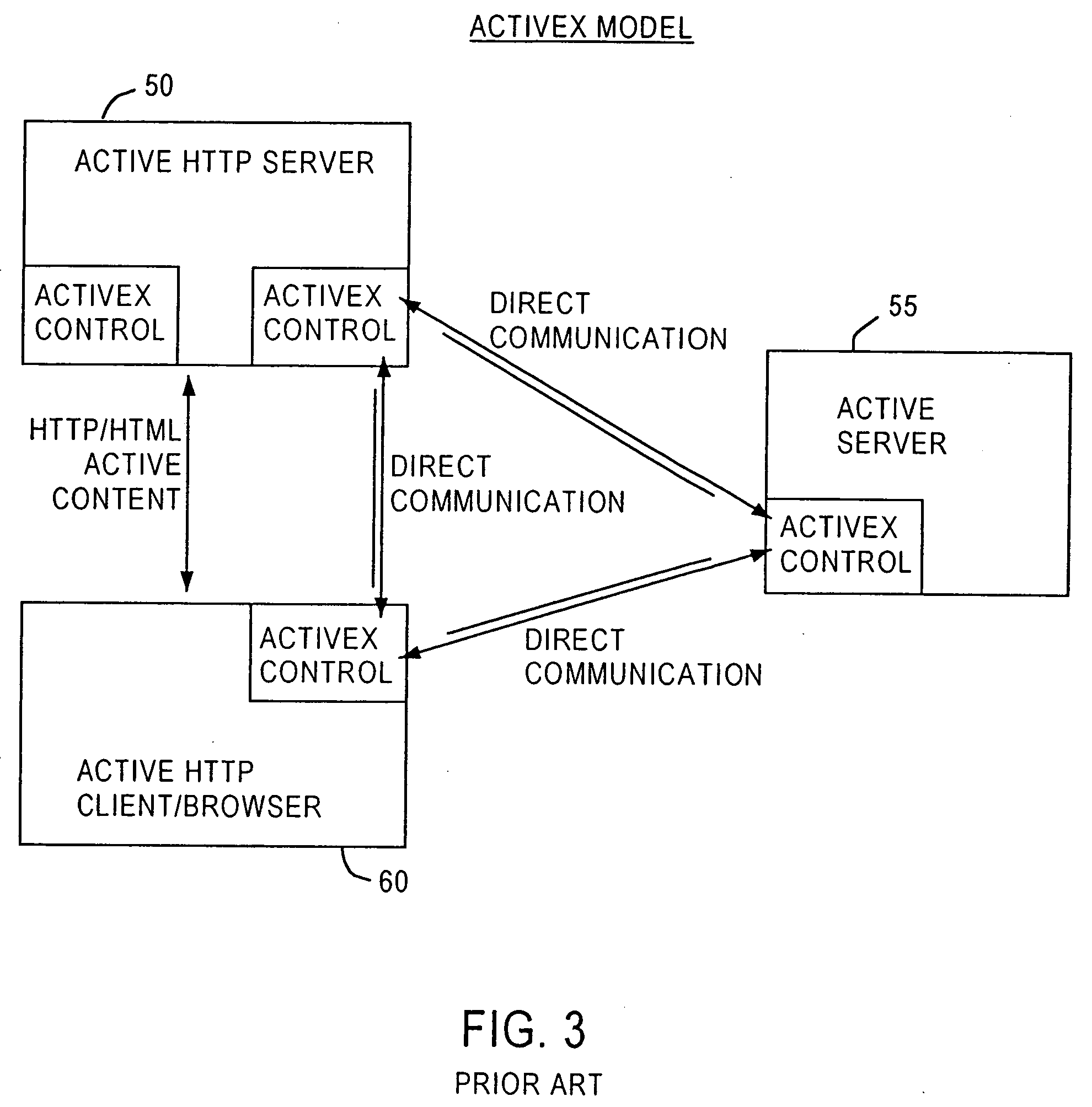Distributed vehicle service method and system
a technology for vehicles and services, applied in the direction of instruments, transportation and packaging, structural/machine measurement, etc., can solve the problems of inability to conveniently or easily update each individual system, the product had little or no flexibility to interchange and update different hardware and software elements, and the new version of the system often takes years to complete, so as to achieve the effect of reducing the size of software stored locally
- Summary
- Abstract
- Description
- Claims
- Application Information
AI Technical Summary
Benefits of technology
Problems solved by technology
Method used
Image
Examples
Embodiment Construction
[0034]FIG. 4 shows a block diagram of an exemplary automotive service equipment system according to the disclosure. The system of FIG. 4 is used to conduct a diagnostic analysis of vehicle components, such as the engine, brakes, suspension or alignment. While FIG. 4 shows an exemplary automotive service system in its general form, the description herein will, by way of example, occasionally describe the operation of an exemplary vehicle wheel aligner, such as that disclosed in U.S. Pat. No. 4,383,370 or 5,208,646, implementing various features according to this disclosure.
[0035] Data input controller 200 is a computer, which may contain a microprocessor and a memory coupled thereto (not shown). Controller 200 comprises a general purpose portable computer (PC), such as an Intel Pentium-based IBM compatible computer, although any hardware platform suitably programmed will work just as well. Data input controller 200 receives data input from a measurement device 210. In a wheel alignm...
PUM
 Login to View More
Login to View More Abstract
Description
Claims
Application Information
 Login to View More
Login to View More - R&D
- Intellectual Property
- Life Sciences
- Materials
- Tech Scout
- Unparalleled Data Quality
- Higher Quality Content
- 60% Fewer Hallucinations
Browse by: Latest US Patents, China's latest patents, Technical Efficacy Thesaurus, Application Domain, Technology Topic, Popular Technical Reports.
© 2025 PatSnap. All rights reserved.Legal|Privacy policy|Modern Slavery Act Transparency Statement|Sitemap|About US| Contact US: help@patsnap.com



